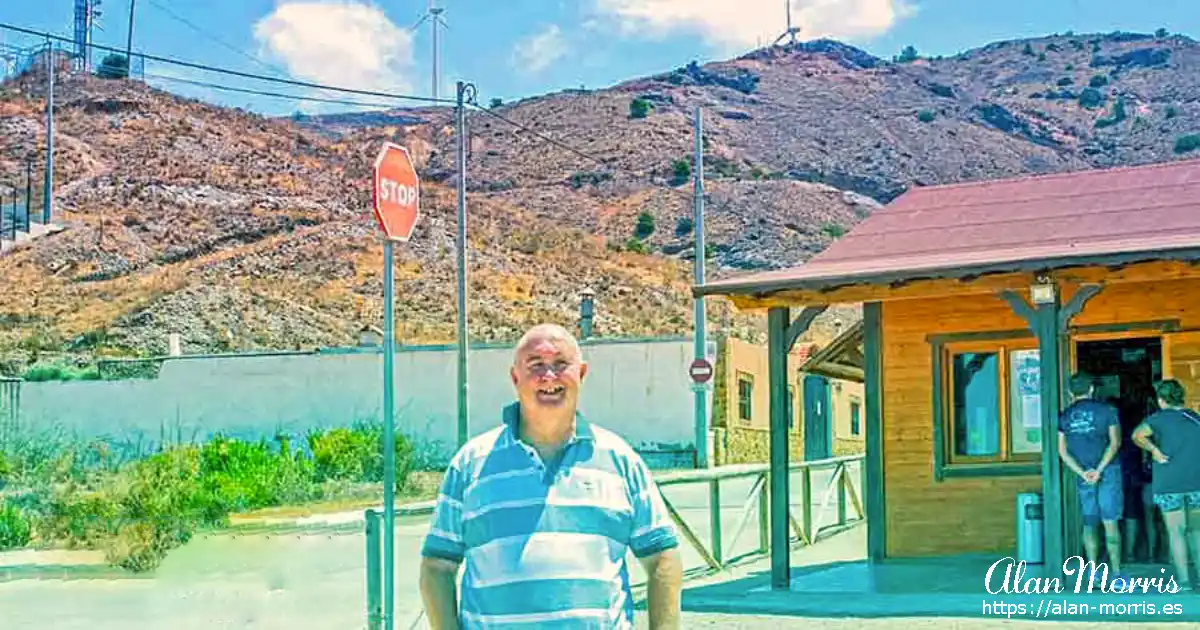My ancestors in Wales were miners, and I have always been interested in what they had to go through as miners. The conditions they had worked in, in Wales, would have been different, but I would get an idea of what they went through after visiting a local mine in La Union, Murcia.
The mountain range at La Unión near Cartagena in Murcia has had mining activity since the Carthaginian and Roman Times. The metallic deposits, mainly lead and zinc, were mined during the mining booms in the 19th and the beginning of the 20th centuries. Mining was stopped in the area in 1991.
The mining activity produced a unique landscape full of disused mines, both open-face and underground. The whole area of 50,000 square metres is now home to a museum and historical site, which can be seen at the Mining Park in La Unión. If you visit it, you will be able to learn about the processes, from mineral extraction to its washing and concentration to the subsequent metal founding in the local foundries.
My Visit to La Union Mines.
I had been to the site previously, only to discover that you must book ahead to make the trip. The English language tour is only available on a Tuesday or Thursday, and I booked to go on a Tuesday. On Tuesday morning's arrival for the booked trip, I discovered that the La Unión street market is held on a Tuesday, making it difficult to find a way to the mining park. I would advise anyone wanting to go to either go on a Thursday or by train, which stops outside the park.
Before the trip starts, you are shown a short English film that gives a short history of the mines and the area. After the film, I jumped on the miniature train to ride up the mountainside to the mine entrance. At the entrance to the mine, we were all given a fashionable hair net to put on before we were given a mining helmet that we needed to wear in the mine.
The tour inside the mine was fascinating, showing the conditions the miners had to work in. They didn't clock in or out on a timer but had to fill a certain number of mine trucks during the day. After banging my head on the ceiling, I quickly realised how cramped the conditions were. Luckily, the mines now have some lights, and our tour guide showed us the path with a torch. The miners' only lights were the lamps they brought to work. The temperature of the mines felt nice and cool compared to the outside temperature, but I was not working for 12 to 14 hours in the dark. Photos in the mine show how hot it must have got as the miners all stripped off to cool down. Safety equipment was not around then; miners worked in shorts and sandals, sometimes barefoot.
We were shown the tools they used to place charges to blow up sections of the mine to allow continued mining of the minerals. This was the most dangerous job in the mine, and understandably, many miners' lives were lost doing this job. The job of drilling holes for the charges was also dangerous, as breathing in the dusty air damaged many miners' lungs, causing early death. The average age of the miners was only in their forties. Many children were also employed in the mines, handing tools to miners, carrying water to miners or moving more minor pieces of mined rock, some as young as 12.
The tour guide showed us the different levels of the mine and how the miners removed the rock and soil they had mined. The fifth level of the mine is now flooded. The water would have been pumped away when the mine was active. Now, the water has found its level and fills the 5th level with mineral-filled dirty water. It has a layer of dust, which gives it a look of thick mud. The tour guide threw a stone onto it, breaking the dirty surface and quickly disappearing, leaving what looked like a hole in dirty ice visible.
After leaving the mine, the tour guide pointed out the washing plant below the mine and the chimneys of the roasting furnaces in the distance. A short walk up the hill, we saw the old gunpowder storeroom, now a tiny chapel and further up the hill, we could see the entrance to another mine that is not yet open to the public. When the second mine is opened, it is hoped that you can ride on a train through the mine, Indiana Jones style.
Although I enjoyed the trip, I was slightly confused as we were told that the mine we viewed was used to mine *Pirates. I thought pirates were found out at sea, swashbuckling their way through life, not as it seems, hiding in mines deep underground waiting to be mined.
The mineral pyrite, or iron pyrite, is an iron sulfide. The mineral's metallic lustre and pale brass-yellow hue give it a superficial resemblance to gold. Hence the well-known nickname of fool's gold.
Summary.
The short video before the trip around the mine and the trip itself was fascinating. I noticed the few children on the trip looked bored stiff, and I wondered why their parents had taken them away from the beaches to visit the mines. Perhaps they wanted to sell their children into service in the mines.
